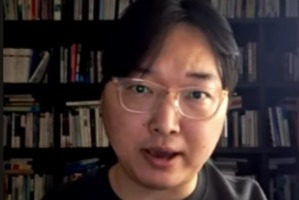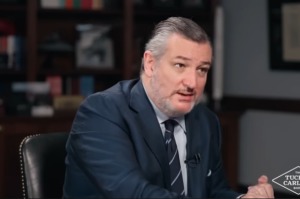Forces of Cultural Change: Explaining the Shift in Public Attitude on Same-Sex Marriage
Last week I wrote about public opinion polls, arguing that they are influenced by people's desire to give socially acceptable answers to human questioners and that poll results can differ vastly when a robotic caller is employed. If, however, we accept as true a shift in public opinion on same-sex marriage, what trends and forces explain that change?
The most visible is the entertainment industry's increasingly affirmative depictions of homosexuality. Soap operas, such as All My Children, that introduced gay themes and gay relationships as early as 2000, movies like Brokeback Mountain, The Color Purple, and Precious, and the continuing string of actors and actresses who have come out in recent years have no doubt helped move public opinion toward support of same-sex marriage. Although most religious groups, including non-Christian ones in their orthodox forms, oppose same-sex marriages, there are notable exceptions among Christian groups. Episcopalians, Unitarian Universalists, and the United Church of Christ all support same-sex marriages. The ordination of gay priests and same-sex marriages continue to split numerous churches and denomination.
Besides the endorsement of gay marriage in Hollywood, another force of cultural change is our schools. Public schools have pushed an agenda that includes the normalizing of homosexual relationships and greater tolerance for sexual exploration. Increasingly, young people are surprising their parents by coming out of the closet. Bible-believing Christians are surprising their friends, neighbors, and congregants by shifting their stance to one of acceptance when a relative adopts a gay lifestyle. These are the times in which we live. Moreover, we can expect the percentage of young people who express same-sex attractions to grow because of the Gay, Lesbian & Straight Education Network (GLSEN) propaganda campaign that is taking place in many public schools across the nation.
While no sane person is an advocate of the bullying or abusing homosexual children, some schools seem to be bending over backwards to accommodate behaviors that may prove disruptive to other students. For example, some schools have allowed girls and boys to cross-dress rather than risk lawsuits and controversy. In an exception to the rule, one Mississippi school created a ruckus when it forbade a lesbian teen from wearing a tuxedo for her yearbook photo.
Even children's sexual education literature has entered the fray. Robie Harris's book It's Perfectly Normal presents homosexuality, bisexuality, and gay and lesbian relationships as normal forms of sexual attraction and opposition to them as bigotry. Harris's book, with its illustrations of sexual acts and nudity, has been awarded, as well as banned and condemned. Nevertheless, it continues to be a best seller and is recommended for children 10 and older.
Social pressures such as these and the push toward normalizing homosexual behavior are likely to lead more people to experiment sexually. Socializing agents like Girl Scouts of America are key to this cultural shift. Since 2000, the organization has adopted a form of political correctness that compromises its members' belief in God, loyalty to nation, and traditional morality. Unlike Boy Scouts of America, which has suffered much criticism for its conservatism, Girl Scouts permits its troop leaders to be openly gay. In "The Cookie Crumbles," Kathryn Lopez notes:
Girl Scout policy forbids sex on Girl Scouts time. But the book "On My Honor: Lesbians Reflect on Their Scouting Experience", published in 1997, is filled with coming-of-age stories sparked by gay encounters in the Girl Scouts. The essay entitled "All I Really Need to Know About Being a Lesbian I Learned at Girl Scout Camp," and various stories of "butch" counselors who "wore men's clothes and had slicked back short hair," are testimony to the prevalence of lesbians in Girl Scouting….Girl Scout staffers writing in the book claim that roughly one in three of the Girl Scouts' paid professional staff is lesbian.
Having conquered the Girl Scouts, gay activists have now set their sights on the Boy Scouts. Under increasing pressure, in May 2013, Boy Scout Councils around the country will vote on whether to drop its more than 100-year ban against having gay troop leaders and members.
Regardless of what we are told by the media and by these cultural agents, homosexuality is simply not the norm when it comes to human behavior. Recent studies of sexual orientation, including the comprehensive National Health and Social Life survey, have found less than three percent of the public identifying as gay, lesbian or bisexual. Though we can assume that some of the people who identify as heterosexual are lying to pollsters, these results are in strong contrast to Alfred Kinsey's now discredited surveys of the 1940s, in which he reported finding a high of 10 percent of the population identifying as homosexual.
If the polling data showing that a majority of Americans back same-sex marriage is accurate, it may be seen as a result of the decades-long campaign of aggression, mounted by gay rights activists, aimed at persuading the public that opposition to the homosexual lifestyle is motivated by bigotry and ignorance. Both the evidence of nature and common sense have been effectively silenced by this agenda. Yet the "homosexual behavior is normal" argument ignores the anatomical design of the human body, the growing data about adverse health consequences of homosexual relations, and the relationship between heterosexual procreation and the survival of the species.
A 2003 study by Dr. Maria Xiridou, a research scientist at the National Institute for Public Health and the Environment, found that married homosexual men in the Netherlands had an average of eight sexual partners per year. In this context, marriage was not a deterrent to casual sex. Andrew Sullivan has written that among homosexuals there is a "greater understanding of the need for extramarital outlets between two men than between a man and a woman; and again, the lack of children gives gay couples greater freedom. Their failures entail fewer consequences for others. But something of the gay's relationship's necessary honesty, its flexibility, and its equality could undoubtedly help strengthen and inform many heterosexual bonds."
Much has changed since Sullivan penned those words. Gay adoptions and childbearing through surrogate mothers has enabled same-sex couples to add children to the calculus. Since the gay culture does not tend to embrace the traditional norms of marriage that include "monogamy, exclusivity, and permanency," children of such arrangements could be at greater risk. Most importantly, they are missing the value that comes from having mothers and fathers of the opposite sex.
Ryan Anderson of the Heritage Foundation has written about marriage and why it matters. According to him, "marriage exists to bring a man and woman together as husband and wife to be the father and mother to any children their union produces," and that marriage is "society's least restrictive means of ensuring the well-being of children." In addition, he argues that same-sex marriages will redefine traditional marriages and they will not include the norms of heterosexual marriages, which include an expectation of monogamy, exclusivity, and permanence.
Regardless of how the U.S. Supreme Court rules in the gay rights cases it is now considering, same-sex relationships are likely to continue growing in the U.S. It is important for us to recognize that many of the changes came about because proponents of non-traditional families and marriages were better organized and in some cases engaged in aggressive campaigns. These forces silenced a great number of the orthodox religious believers who see same-sex attractions as just another one of the many temptations that believers must resist.
What are Bible-believing Christians to do when the world leaves us behind? We must continue to stand on biblical values and principles. In Romans 1:26-7, we read:
"For this reason God gave them up to dishonorable passions. For their women exchanged natural relations for those that are contrary to nature; 27 and the men likewise gave up natural relations with women and were consumed with passion for one another, men committing shameless acts with men and receiving in themselves the due penalty for their error." (ESV). If we truly believe Scripture, Christians must speak up, despite the oppressive cultural, social, and political forces acting against us. What we cannot do is pretend that there are no consequences for the rest of us when society rejects the knowledge it once had about the family and its unique role as the building block of a civilization.





























